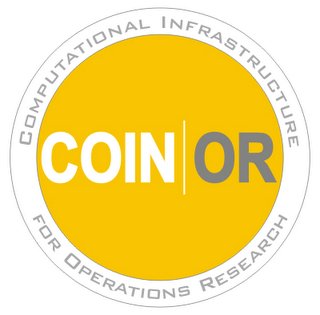 US News and World Report has an article in their July 31 issue on how UPS uses technology to better handle packages. In the hypercompetitive world of package delivery, the need to use OR to create efficiencies is very strong.
US News and World Report has an article in their July 31 issue on how UPS uses technology to better handle packages. In the hypercompetitive world of package delivery, the need to use OR to create efficiencies is very strong.
Perhaps no industry has more effectively embraced the power of digital technology to modernize operations–even more so than airlines, which were long seen as leaders in cutting costs and boosting revenues through computers. “The delivery companies have leapfrogged ahead,” says Satish Jindel of SJ Consulting Group.
In their tight competition, industry leaders UPS and FedEx have one-upped each other for years in rolling out hand-held computers, wireless links, and new uses of mainframe computing power. Now UPS is pushing automation to the last mile of its delivery network, down to charting the order in which packages are loaded on a truck and the most efficient route for delivering them. Dubbed “package flow technology,” the latest upgrade is costing $600 million and taking three or four years to implement across the company’s 70,000 routes. When the upgrade is in place, UPS says it should get back that $600 million every year in saved costs, as more-efficient routes cut 100 million miles of driving time and 14 million gallons of gas. “It’s fundamental–a major, major change that will even change the way our drivers run their routes,” says Chief Information Officer David Barnes.
They even found room for a quote from me:
Pushing automation to the fringes of its operations is only possible because of the mass of data that UPS computers have been collecting as parcels move through its central hubs, and thanks to advances in math and computing power. Delivery companies have become leaders in “operations research,” a growing field that uses mathematical models to streamline processes, says Michael Trick of Carnegie Mellon University. “It used to be that only airlines could worry about issues like routing,” he says.
Hmm… did I really say the last part? Well, the point I was trying to make was that while airlines where at the forefront of practical OR, we are now seeing it in lots more places. UPS is a good example, though they are catching up with firms that caught the OR bug early, like FedEx:
Bart Haberstroh, who delivers for UPS in St. Charles, Mo., a St. Louis suburb, remembers when “the joke was that the sharpest tech UPS had was a sharp pencil,” he says as he wheels his brown van through familiar streets.
With the amount of OR pouring into their systems, that is no longer the case.
 J. Michael Steele
J. Michael Steele There is more OR in the New York Times, not that they would mention our field by name. There is an
There is more OR in the New York Times, not that they would mention our field by name. There is an 
 International Transactions of Operational Research
International Transactions of Operational Research Gene Cooperman
Gene Cooperman The winner of this year’s
The winner of this year’s